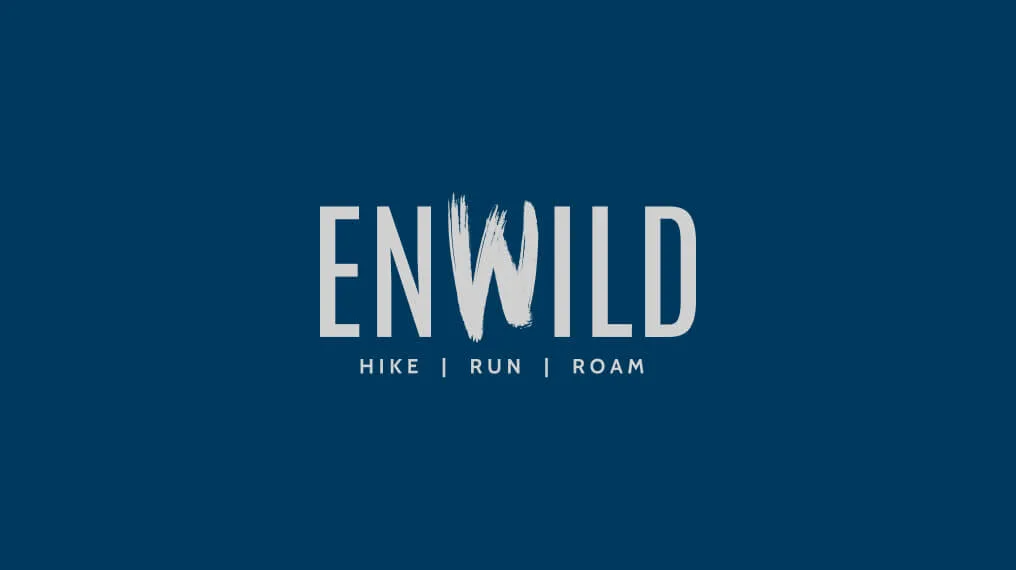Creating a Brand Identity for Your Business
- Branding
- Logo Design
- Marketing Strategy

We hear from businesses all the time that are looking for a new logo. Perhaps they’re starting a new company or are looking to modernize their business. But what many of these businesses don’t realize is that creating a brand identity will provide far more value to their company than simply redesigning their logo.
If you’re not sure where to start when creating a brand for your company, here’s everything you should know before approaching a rebranding project.
What is a Brand Identity?
Simply speaking, a brand identity is the set of elements that establish your business visually and set it apart from your competitors. These elements likely include a logo, color palette, fonts, and key pieces of messaging. They must be consistent but flexible, and perhaps most importantly, they must be functional and easy to use.
But creating a brand identity is about much more than a handful of visual elements. Your brand is in everything you do. It’s the greeting you use when you answer the phone. It’s the decisions you make on packaging and materials. It’s how you react to a crisis. Your brand is what makes you, well… you.
Your Business’s First Brand vs. Rebranding
While the process for a first brand vs. a rebrand may look similar, there are a few key differences to keep in mind.
Your First Brand
If you’re a start-up or new company, you likely won’t have as much data on your customers as an established business. In this case, external research is especially crucial to make sure you have a clear picture of your potential customers. Doing this research will not only help you in creating a brand identity, but may also be of use in your business development strategies and your lead generation.
If you’re working with venture capital, a startup incubator, or any other investors, you’ll also need to keep them in mind. The buy-in of these key players is essential to a successful brand launch.
Before you engage with a logo designer or agency, outline the internal process for your team. Include a timeline, key players who will be involved at each stage, and a budget. This will ensure the brand is developed on time and on budget and will help your key stakeholders feel included in the process.
Rebranding
If you have an existing brand and are considering rebranding, you have a major advantage over new companies since you know far more about your customer than they do. The flipside is that it can be harder to separate yourself and your view of your company from how your customer sees you.
For example, you may have in your mind that you need to level up your brand into a more formal, professional space. However, your customers may love your approachability and lack of red tape.
While pleasing higher-ups and stakeholders matters, your company’s success relies on your customers. Balancing the needs and desires of both groups will ensure that you develop a successful brand strategy.
Part One: Understanding Your Audience
While it can be tempting to put pen to paper and start sketching out logo ideas, it’s crucial that your brand begins with your audience.
Who Is Your Audience?
Understanding your audience is the first step toward creating a brand. You’ll need to get inside your customers’ heads to understand what they look for in a product or service, what drives them to make decisions, and how to make them choose you over your competitors.
Here are some methods and strategies to explore to find out more about your customers:
- Conducting market research
- Holding focus groups
- Performing social listening to see what customers are saying
- Asking customers to fill out surveys (online or in-person)
- Developing a persona to better illustrate your typical customer
- Diving into Google Analytics, social analytics data, or other information you may already own that can tell you more about your customers
- Hiring an agency to create an audience intelligence document for your company
Once you’ve decided on your method, you may need to complete further research to understand how to leverage the method you’ve chosen. Fair research without bias or leading questions is your best chance at understanding your customers authentically.
Here are some questions to consider when researching your audience:
- Are your customers consumers (B2C) or businesses (B2B)?
- What is/are your main demographic(s) – age, gender, location, etc.?
- What is their education level? Financial status? Marital status?
- What drives them to choose you over your fiercest competitor?
- What matters to them most? Price point? Quality? Convenience?
You’ll be far more successful in creating a brand identity once you have a solid understanding of your customers and know what makes them tick.
Part Two: Strategizing Against Your Competitors
In addition to researching your customers, you’ll also want to take a deeper look at your competition. You may have already gathered a list of competitors your customer mentioned in your former research, but don’t be afraid to include other competitors you know in the industry.
What do their brands look like? Do you want your brand identity to stand out from the crowd? Or would you rather blend in but do so with perfect execution? What do their brands do well and poorly?
Answering these questions as you engage with a brand designer will help you have a clearer vision of what you want. And, it will help guide conversations about your fonts, brand color palette, and brand voice down the line.

Part Three: The Logo
Getting a new logo is exciting. It’s one of the most visual pieces of your brand and is an element you’ll likely interact with on a daily basis. Plus, it’s the face of your brand when it comes to customer interaction. Here are a few tips to make sure you get the most out of your new logo.
Put Your Customer First
It can be hard to distance yourself from your company’s brand, but remember that you are not your customer. When creating a brand identity, try to put yourself in your customers’ shoes. Think about their demographic, the other brands they likely shop from, and how your brand can best appeal to them. Just because you don’t like brutalist design or the color orange doesn’t mean it isn’t a great option that your customers will love.
Provide Great Feedback
One of the areas where many companies struggle is in providing their logo designer with concrete, specific feedback. Keep these things in mind to make your revision rounds go as smoothly as possible:
- You won’t like every design option you receive, and that’s okay. Don’t be afraid to speak your mind truthfully. Your designer has heard it all before and would rather take the criticism and help you develop a logo you love.
- Incomplete or partial feedback wastes your valuable time and money. Provide complete feedback from all relevant stakeholders, and resolve any internal disagreements before the feedback is sent.
- Be specific and resolute. Take time to absorb the logo options you’ve been given before providing feedback. Try to pinpoint the elements you like and those you don’t to give your designer clear action items moving forward.
Ask for the Right Assets
The best logos are flexible and have different options to utilize depending on the situation. For example, you may want a single-color logo for embossing or an icon version of your logo for tiny applications.
Here are some of the variations you may want to consider requesting from your logo designer:
- Horizontal and vertical options
- Icon only/text only
- Black and white/one color/two color
- With and without copyright or trademark symbols
- Optimized for embroidery or vinyl cutting
- Transparent/vector/pixel-based files
Your logo needs to be flexible but consistent. Getting the assets you need upfront will help your brand be a success for years to come, even if you don’t have an ongoing relationship with your brand designer.
Part Four: Supporting Brand Elements
In addition to your logo, your brand should be defined by supporting elements like colors, fonts, textures, and messaging. While your logo may be the most recognizable visual, your brand is nothing without a complete suite of elements.
Imagine Mcdonald’s without their signature red and yellow, or Amazon’s logo in a script font. Logos need the support of a full brand strategy to do their best work.

Brand Color Palette
Color palettes can be a divisive topic within a brand. You may be tempted to call out your favorite color, or maybe you want to stay with your existing colors because they have worked thus far.
Here are four things to consider when choosing or approving a branding color scheme:
- Your color palette should reflect your brand, not your personal tastes. Just as red and black would never be appropriate for a daycare, there are likely colors that don’t make sense in your industry or your niche within your industry.
- Different colors evoke different emotions. There’s a reason the cereal aisle is full of red and orange boxes and that most luxury companies focus on black and white: because brand color psychology works. Your designer will be able to help you pinpoint which colors are best for your industry, but consider the emotions you want your brand to evoke. Respect? Excitement? Trustworthiness?
- Take a look at your competitors’ color palettes. Do you want to blend in or stand out? There’s no wrong answer, but knowing what your brand will look like amongst your competitors matters. The best brand colors are intentional and strategic.
- Consider contrast for readability and accessibility. Just like brick-and-mortar businesses need to offer accessibility in the form of wheelchair ramps and elevators, online businesses should consider accessibility in terms of their design. While it’s a bit more complicated than just choosing the right colors, keeping accessibility in mind during discussions about your brand color palette can save you trouble later.

Fonts
Choosing a font for your brand is another discussion where everyone will have an opinion. What’s most important is to focus on your customer and your industry over your personal tastes. Check out our four top tips on how to choose fonts for your brand:
- Keep it simple. Your entire brand only needs one to three fonts. Choosing more than three fonts can make your brand look disconnected and hodge-podge.
- Prioritize legibility. Sure, a thin script font may be the perfect fit for your brand, but it loses its value if no one can read it. Consider various applications — from massive billboards to long-form documents — when choosing a font for your brand.
- Let your brand voice shine through. Your fonts should give customers a subconscious first impression of your company’s personality and values.
Messaging, Voice, and Tone
When it comes to brand messaging, what you say matters – but how you say it is just as important. No matter who is writing on behalf of your brand, the tone and voice must be the same. This presents a cohesive and professional front for your business that will earn customers’ trust and loyalty.
The voice and tone you choose should be consistent with the brand identity you’ve created. It might be exciting and fun-loving or determined and resolute. Whatever it is, it must be steady and present in all elements of your brand.
You’ll then need to convey your business’s new tone and voice to all employees who speak or write on behalf of the brand. Consider creating a brand standards guide that answers questions like:
- How do I greet customers or clients?
- What should I say when I answer the phone?
- What person and tense do I write in?
- How do we address (or not address) difficult subjects like religious holidays, social movements, and political events?
- What is the elevator pitch for our business?
- Are there any terms or industry jargon we want to avoid?
- How do we react to crises in writing (both externally and internally)?
Part Five: Rolling Out Your Brand
Once you’re given your final logo and other brand assets, you may think the hard work of creating a brand identity is over. But the truth is, the way you present and roll out your brand to the rest of the world is just as crucial to its success.
Announcing Your New Brand Internally
Getting employee buy-in of your new brand is key. Whether you opt to include employees throughout the branding process or only notify them when the brand is complete, it’s important that you present your new brand in the right way.

Consider a presentation, offer free swag like t-shirts or water bottles, and include plenty of time for questions and answers. The way your brand is perceived internally will set the stage for how your employees convey your company to customers and business partners, so it’s imperative that they have a positive view of the new brand.
Announcing Your Brand Publicly
Perhaps even more important than presenting your brand to your internal team is announcing it to the world. If you’ve seen one of the many new branding flops over the years, you’ll know just how much first impressions can matter when creating a brand identity.
Depending on your industry and the size of your business, you may want to consider some of the following:
- An event to celebrate the new brand reveal
- A formal press release to share through PR outlets and on your website
- A PPC campaign to clarify the change for users if your rebrand involved a name change
- An email campaign to announce the change to your current customers or clients
- A short statement to share on social media and your website
- A letter and swag bag to send to key investors and stakeholders
Creating Consistent Ongoing Brand Collateral
Finally, you’ll need to set your new brand up for success so it can be used appropriately by your team for years to come. If you worked with an experienced agency, your new brand should come with brand standards and a brand style guide to share with the rest of your team.

These documents will show appropriate and inappropriate uses of the logo, as well as detail the fonts, brand color palette (in RGB, CMYK, HEX, and Pantone), and resources that are allowed within the brand. They will help your team stay true to the brand as the designer intended it and will give you a resource to turn to when in doubt. Everyone in the company, from the CEO to an intern, should feel comfortable using the brand and be able to identify inappropriate use.
If your agency didn’t include one, you may also want to create and circulate a tone and messaging document that explains any changes to the brand voice. This can be especially useful if you had no formal brand in place prior to your rebrand.
Part Six: The Future of Your Brand
You’ve done it. You’ve created a brand identity that shows the world who you are and where you shine. So what next?
While you likely did some outreach during your initial brand launch, ongoing Internet marketing can help you continue to grow your brand awareness and bring traffic to your website. You may want to consider search engine optimization (SEO), social media marketing, email marketing, or content marketing to engage new audiences and grow your business.
Above all else, stick to your brand standards, encourage your team to evolve your brand over time, and enjoy the process.
Considering rebranding your business? Creating a brand identity can be a rewarding and engaging experience with the help of a trusted brand designer.
 Kimmick
Kimmick  Kelly P
Kelly P